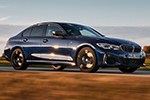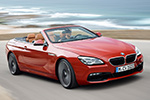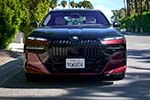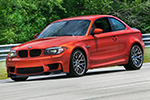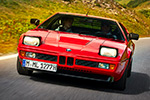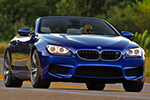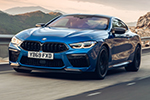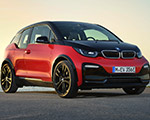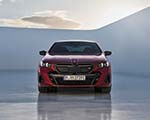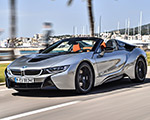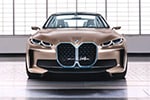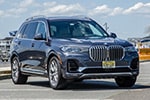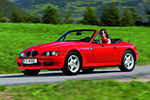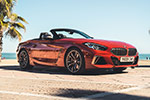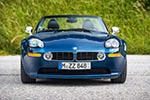MINI’s John Cooper Works, or JCW, division is tasked with one of the most fun missions on the planet. They take run-of-the-mill MINI cars and SUVs — which are already pretty enjoyable right out of the box — and turn them into more focused versions of themselves. The next generation of MINI is upon us, and that means a new round of JCW products, too. But what exactly goes into turning a MINI into a JCW? Perhaps more importantly, how does electrification factor into the fun formula? We sit down with Patrick Häussler, the MINI engineer responsible for the J01 JCW Electric and J05 Aceman JCW, to learn more.
Starting From the Ground Up
“The very first thing is always the springs,” Patrick starts when we ask where the engineers begin when it comes to JCW-ing a MINI. After the springs come the dampers, but that’s not all that gets tinkered with. New anti-roll bars, stabilizers, bump stops are added, and additional camber gets dialed in. After locking in the “hardware,” as Patrick calls it, MINI turns its attention to the steering. “If you have very heavy steering, a car might feel numb,” Patrick says. “Too light, and it might feel a little bit nervous.” The idea is to find the perfect medium. Another factor MINI looks at is at-speed steering; obviously, around town, you don’t want heavy steering. But at highway speeds, you want something with some heft to avoid twitchiness. Steering is one of the most critical components to how a car feels, according to Patrick. We agree.
Here’s where the hardware starts to differ. The gasoline-powered F66 MINI Cooper JCW features frequency-selective dampers (FSD). These mechanical dampers adjust themselves based on road inputs—softening for smaller, rapid bumps and firming up for larger impacts. It’s not a fully adaptive electronic system, but Patrick says it gives the car an impressively versatile ride, blending comfort with sharp body control. MINI engineers also dialed in extra camber at the front axle, helping to maximize grip in corners.
The J01 MINI Cooper JCW Electric, on the other hand, uses a simpler sport suspension setup without the frequency-selective tech. Patrick tells us they tried a more advanced system early in development, but they weren’t happy with how it felt on the heavier electric platform. So instead, they went with a traditional mechanical sport suspension, balancing comfort and performance the old-fashioned way—with careful tuning of spring and damper rates.
Then there’s the Aceman JCW, which surprised us the most. With its longer wheelbase, wider track, and 40mm higher center of gravity, it’s a bigger car than either Cooper. MINI originally thought they could carry over much of the J01’s setup to the Aceman, but Patrick says that didn’t work at all. They had to go back to the drawing board, retuning the springs, dampers, stabilizers, bump stops, and steering to make it feel worthy of the JCW badge. Interestingly, the steering on the Aceman was made intentionally lighter than the Cooper JCW. Why? He explains that adding too much steering weight to a bigger, heavier car can make it feel slow and sluggish. Lightening it up helps preserve the MINI’s signature agile feel—especially around town.
Get a Grip: Traction Matters
The electrified J01 MINI Cooper JCW brings a perhaps understated challenge with it: tires. “Since it’s an electric vehicle… a sports tire isn’t always the best when it comes to rolling resistance,” Patrick explains. Rolling resistance impacts EV range. MINI needed to fit a tire that balanced sportiness with efficiency, and Patrick thinks they “did pretty good.”
Of course, with all that electric torque on tap, traction management becomes even more important. “For this one, we really worked on yaw momentum enhancement,” Patrick says. This system uses subtle braking inputs to reduce understeer or even encourage oversteer, making the car more playful and adjustable—sort of like BMW M’s MDM mode. It gives you just enough freedom to have fun, while still offering a safety net if you get in over your head.
Speaking of overconfidence, Patrick recalls testing the JCW with DSC fully off. “I turned in, got sideways, and it was cool. But you cannot do that for a customer,” he says. MINI tunes the DTC (Dynamic Traction Control) mode to provide a balance between freedom and stability—what Patrick calls a “parachute in the background” to help save drivers when things get sketchy.
Torque steer—something you often feel in powerful front-wheel-drive cars—is another factor MINI had to manage. Patrick actually embraces a little bit of torque steer, as it gives drivers more feedback when pushing the car to its limits. “We want to have as much feedback as possible—especially for the Cooper—without it pulling you somewhere out of the corner,” he explains. The team carefully tuned torque steer compensation so the car feels alive but never unwieldy.
Three Different Cars, Three Personalities
While we enjoyed our time with all three JCW products, each had distinct character traits that made each one enjoyable in a different way. That’s not by accident. More on that in the full reviews coming up. In the end, Patrick and his team worked hard to make sure every JCW product still feels agile and fun.
Check out the video for more insights and let us know which one you’d pick. Gasoline? Electric? Or the do-it-all Aceman? We’d love to hear your thoughts.








































